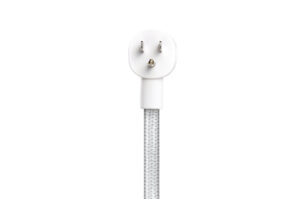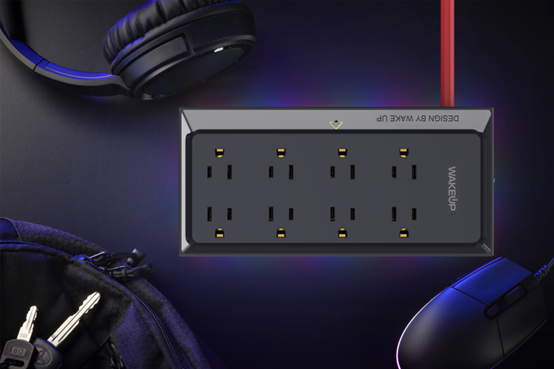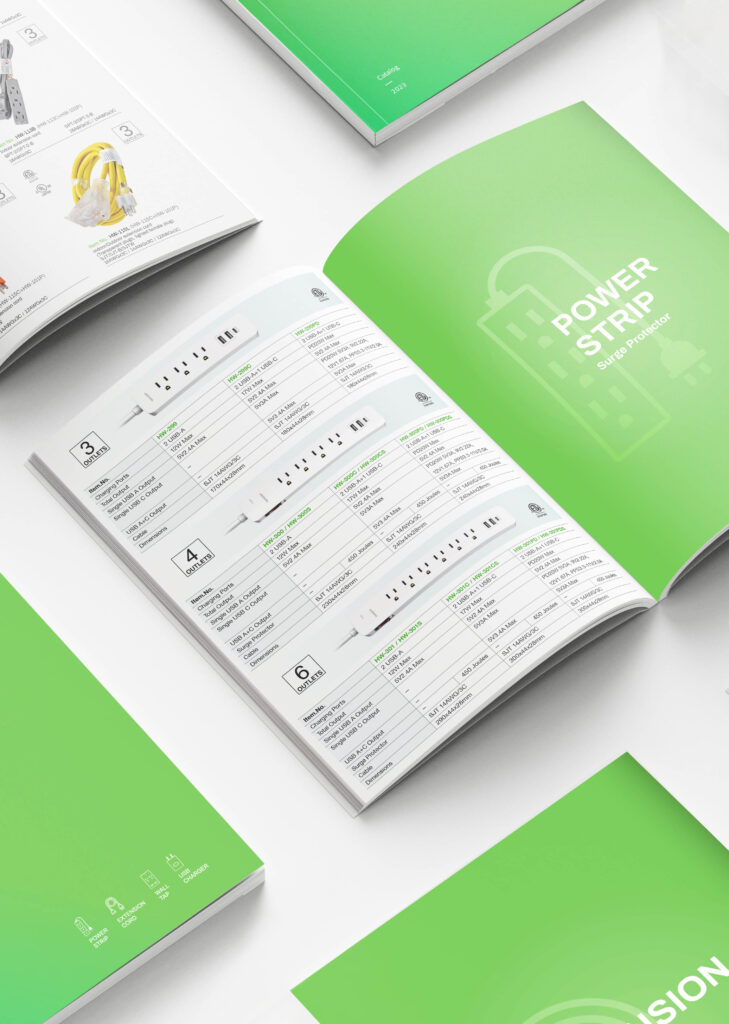Bulky or Flat: Plug Design for U.S. Power Strip
When choosing a power strip, the plug design is often overlooked, yet it plays a crucial role in convenience, compatibility, and safety. Should you go for a flat, space-saving plug or a bulkier, heavy-duty option? In this guide, we’ll explore different U.S. plug designs, their use cases, and the best power strip recommendations for each type.
Flat vs. Bulky Plugs: What's the Difference?

| Plug Type | Form Factor | Best Use Case |
|---|---|---|
| Flat Plug | Slim & Low-Profile | Behind furniture, tight spaces |
| Rotating Plug | Adjustable & Flexible | Hard-to-reach outlets |
| Right-Angle Plug | Semi-Compact | Moderate space-saving |
| Foldable Plug | Compact & Portable | Travel-friendly power strips |
| Bulky Plugs (NEMA 5-20, Twist-Lock) | Heavy-Duty | Workshops, industrial use |
Flat Plug Designs
1. Flat Plug – Best for Tight Spaces
- Description: A low-profile plug that sits flush against the wall.
- Best For: Outlets behind furniture, entertainment centers, or office desks.
- Recommended Power Strip:
- Belkin 6-Outlet Slim Power Strip – A reliable, space-saving model with a flat plug and surge protection.
- Aligator Ultra-Slim Power Strip – Designed for tight spaces with multiple AC outlets and USB ports.
2. Rotating Plug – Best for Awkward Angles
- Description: A plug head that rotates 360° to adjust the cord direction.
- Best For: Outlets in tricky locations, such as behind appliances or in corners.
- Recommended Power Strip:
- GE Rotating Plug Power Strip – Offers a flexible rotating plug for easy positioning.
- Philips Swivel Plug Power Strip – A surge-protected strip with a 180° rotating plug.
3. Right-Angle Plug (Non-Flat) – Best for Moderate Space-Saving
- Description: A plug where the cord exits at a 90-degree angle but isn’t as flat as a true low-profile design.
- Best For: Saving some space while maintaining a durable connection.
- Recommended Power Strip:
- Anker PowerExtend 6-Outlet Power Strip – Features a right-angle plug with surge protection.
- Aligator Heavy-Duty Right-Angle Power Strip – Designed for home and office use.
4. Foldable Plug – Best for Portability
- Description: A plug where the prongs fold into the body for compact storage.
- Best For: Travel-friendly power strips, laptop chargers, and compact setups.
- Recommended Power Strip:
- Anker PowerCore Travel Strip – Small, lightweight, and easy to pack.
- AUKEY Foldable Plug Power Strip – Features USB ports and surge protection.
Bulky Plug Designs
5. NEMA 5-20 (Type B Variant) – Best for Heavy-Duty Power Strips
- Description: A standard three-prong plug with a T-shaped neutral pin for handling 20 amps.
- Best For: Powering heavy-duty appliances or workshop tools.
- Recommended Power Strip:
- Tripp Lite Heavy-Duty Power Strip (20A Rated) – Built for workshops and garages.
- Leviton Industrial-Grade Power Strip – Rugged design with NEMA 5-20 support.
6. Twist-Lock Plugs (NEMA L5-15, L5-30) – Best for Industrial Use
- Description: A circular plug with curved pins that locks into place to prevent accidental disconnection.
- Best For: Medical, industrial, and high-security environments.
- Recommended Power Strip:
- Hubbell Twist-Lock Power Strip – Designed for professional settings.
- Leviton Locking Receptacle Power Strip – Secure and reliable for specialized applications.
Choosing the Right Power Strip for Your Needs
| Need | Best Plug Type | Recommended Power Strip |
|---|---|---|
| Tight spaces | Flat Plug | Belkin Slim Power Strip |
| Hard-to-reach outlets | Rotating Plug | GE Rotating Plug Strip |
| Moderate space-saving | Right-Angle Plug | Anker PowerExtend |
| Travel & portability | Foldable Plug | AUKEY Foldable Strip |
| Heavy-duty tools | NEMA 5-20 Plug | Tripp Lite Industrial Strip |
| Industrial/Medical use | Twist-Lock Plug | Hubbell Twist-Lock Strip |
Conclusion

Whether you need a low-profile flat plug for tight spaces, a rotating plug for flexibility, or a heavy-duty twist-lock plug for industrial use, choosing the right power strip can make a huge difference in convenience and safety. Consider your space constraints, power needs, and environment before picking a design.
Still unsure? Let me know your use case, and I’ll help you find the perfect power strip!








